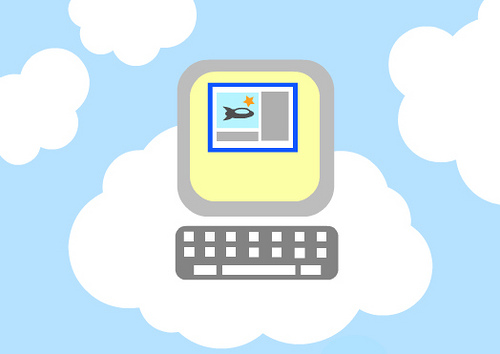
When you need to set up a server, the process can be complex and frustrating without guidance: there are many types of server package, with a different acronym for each. Even worse, the terms used are rarely standardised; terms such as ‘the cloud’ are applied to a number of different types of package, with different capabilities and limitations. In this article we’ll explain the basics of features cloud servers generally share, software and hardware considerations for such a system and a beginner’s guide to setting up the software environment (‘LAMP’ system) to support a cloud server.
What is a cloud server?
A cloud server is a similar service to a VPS (virtual private server). Like a VPS, you have access to a virtualised server which looks and acts like a dedicated server from the user end. The software simulates a server environment complete with hardware, when in reality two or more virtualised servers are running on the same hardware. Usually in order for a VPS’s hardware to be upgraded or changed, the VPS has to be taken down first.
How does a cloud server work?
A cloud server is a little different: like a VPS, two or more servers run on the same hardware, but unlike a VPS the hardware is flexible; new computing power and hard-disk space can be allocated to each server in real-time. Generally, a cloud server uses a flexible billing format in which the customer pays only for the resources which they use.
What options are there for operating systems?
A cloud server can be operated with a variety of pre-installed images based on a variety of operating systems: Debian, Ubuntu, Windows and others. Alternatively, images can be installed manually via a disk, or ran via a live build on a medium without permanent data storage, such as a CD image. Finally, it is possible to create a server which uses an already existing drive. Out of the above options, perhaps the easiest is to use a pre-installed or live image, as the settings have already been configured. Linux images are somewhat easier to learn, however a windows image may offer improved compatibility with other devices due to its ubiquitous nature.
Hardware considerations.
An advantage of setting up a cloud server is its flexibility: if you need your server to run faster or require more space, you can add it on the fly without affecting the existing system. With a dedicated server or a VPS, the hardware configuration of your server is much more difficult to change, and may involve delays or periods of down-time on your system.
Setting up a LAMP environment.
If you’re using linux to run your server, you’ll need a software environment that will allow it to function as a server. A LAMP environment is a combination of several pieces of software: Linux cloud servers, an Apache web server, MySQL (a multi-user, multithreaded SQL database system) and a programming language such as PHP, Perl or Python, used in server-side applications. Once a server has been set up, PHP and Apache should be installed onto it. Following their installation, a simple PHP page and Database can be established.
Other considerations.
Sometimes, even the most stable server may have problems which result in down-periods or loss of functionality or data. In order to prevent permanent loss of important information or losing service for too long, it may be wise to establish one or more backup servers, where your information can be protected and service re-established in the case of a problem.
A cloud server can be a great solution for systems requiring the ability to add more computing power or other hardware features quickly and easily.
Sources: http://www.elastichosts.com/support/tutorials/
http://en.wikipedia.org/wiki/LAMP_(software_bundle)
http://serverfault.com/questions/278532/what-is-the-difference-between-a-
cloud-server-a-virtual-server-and-a-dedicated-s

